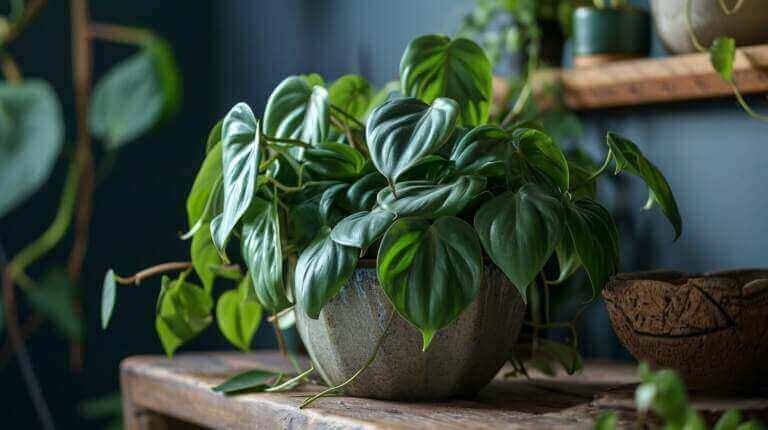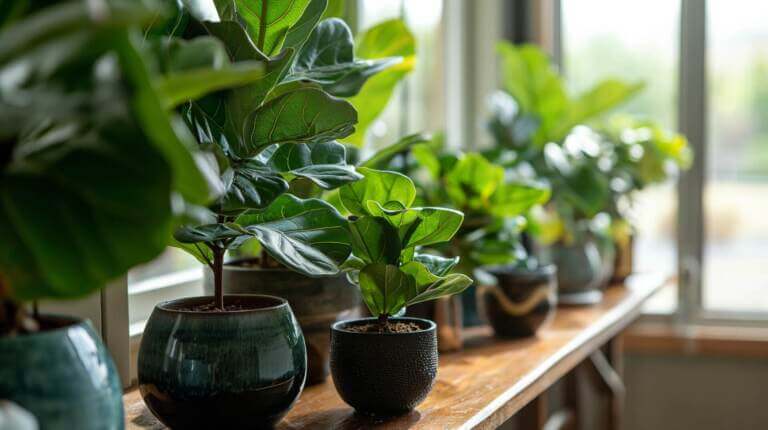I have always been fascinated by the vibrant foliage of crotons. These tropical plants, scientifically known as Codiaeum variegatum, add a touch of exotic beauty to any garden or indoor space. However, over time, you may notice that your crotons start to become leggy, with sparse growth and elongated stems. Don’t worry, though! With proper pruning techniques, you can help your crotons thrive and achieve a fuller, bushier growth.
Key Takeaways
- Pruning crotons is an optional aspect of care, done for various reasons such as deadheading, propagation, rejuvenation, and shaping.
- The best time to prune crotons is in the spring when they are experiencing vigorous growth.
- When pruning, wear gloves to protect your skin from the sap and sanitize pruning shears before and after use.
- For individual leaf removal, cut as close to the main stem as possible.
- Avoid removing more than one-third of the plant during pruning to promote healthy recovery.
Crotons are stunning plants that deserve some extra care to keep them looking their best. In the following sections, I will discuss the different reasons for pruning crotons and provide step-by-step guidance on how to do it effectively. Let’s dive in and start pruning those leggy crotons!
Reasons for Pruning Crotons: Deadheading and Propagation
Pruning crotons serves various purposes, including deadheading and propagation. Deadheading involves the removal of faded flowers to maintain a neat and tidy appearance of the plant. Crotons sometimes produce long stems or racemes with small, yellow and white star-like flowers. To deadhead, simply use clean pruning shears to cut off the entire raceme at its point of origin. This practice can be done regularly, especially if the croton is grown outdoors in a formal setting.
Propagation is another reason to prune crotons. If you want to start a new plant, you can snip off a 3-4 inch length of new tip growth with 3-5 leaves. Make sure to cut just above a leaf node to encourage regrowth on the existing plant. Dip the cut end in rooting hormone powder and plant it in moist potting soil to propagate a new croton.
Benefits of Deadheading and Propagation
- Deadheading: By removing faded flowers, you prevent messy shedding and promote a tidy appearance.
- Propagation: Propagating crotons allows you to create new plants and expand your collection.
Both deadheading and propagation are simple pruning techniques that can be easily mastered to enhance the growth and overall beauty of your crotons.
| Reason for Pruning | Technique | Benefits |
|---|---|---|
| Deadheading | Remove faded flowers by cutting off the entire raceme at its point of origin | Prevents messy shedding and maintains a tidy appearance |
| Propagation | Snip off a 3-4 inch length of new tip growth, dip in rooting hormone powder, and plant in moist potting soil | Allows you to create new plants and expand your collection |
Rejuvenation and Removal of Damaged and Dead Foliage
Rejuvenation pruning is a key technique to stimulate growth in crotons that have become old, neglected, or severely infested with pests or diseases. This method involves carefully cutting back one-third of the branches or trimming one-third off all branches to encourage new growth and revitalize the plant. However, caution must be taken with crotons as they can easily shed their leaves when stressed. It is advisable to proceed with rejuvenation pruning gradually to minimize shock.
In addition to rejuvenation, it is essential to regularly remove damaged and dead foliage from crotons to ensure their overall health. Shriveled or dead leaves should be cut off at the point where they meet the branch, and extensive damage should be progressively removed to minimize stress on the plant.
When dealing with pest or disease infestations such as mealybugs, scale, spider mites, anthracnose, or powdery mildew, pruning affected leaves or branches can help remove pests and diseased areas. Take care to avoid injuring the surrounding plant tissue during the process.
Table: Common Pests and Diseases Affecting Crotons
| Pest/Disease | Description | Treatment |
|---|---|---|
| Mealybugs | Tiny insects covered in a powdery, white substance that feed on plant sap. | Prune affected leaves or branches and treat with insecticidal soap or horticultural oil. |
| Scale | Small, immobile insects that form hard, shell-like coverings on stems and leaves. | Remove scale insects by scraping them off with a brush or cotton swab dipped in rubbing alcohol. |
| Spider Mites | Microscopic pests that cause yellowing, stippling, and webbing on the leaves. | Prune affected leaves or branches and treat with insecticidal soap or neem oil. |
| Anthracnose | Fungal disease that causes brown spots with yellow halos on leaves. | Prune affected leaves or branches and treat with a fungicide according to label instructions. |
| Powdery Mildew | Fungal disease that appears as a white, powdery coating on leaves. | Prune affected leaves or branches and treat with a fungicide according to label instructions. |
Rebalancing and Shaping Crotons
When it comes to maintaining the visual balance and shaping crotons, there are a few techniques that can be employed. Rebalancing the plant is essential to prevent top-heavy growth, which can lead to leaning and branch breakage. To achieve physical and visual balance, start by identifying the most top-heavy branch. Reduce its height by one-third, repeating the process on other top-heavy branches as needed. This will help distribute the growth evenly throughout the plant.
Shaping crotons artistically is another option for those looking to create unique and visually appealing designs. Some individuals choose to preserve the bare, tree-like stems of crotons and focus on pinching back the leafy tips. This technique can give the plant a desert Joshua tree-like appearance, adding an interesting touch to any indoor or outdoor space.
Crotons can also be trained in the bonsai tradition, allowing for the creation of miniature versions with selective wiring and pruning. This meticulous approach requires careful attention to detail and patience but can result in stunning bonsai-style crotons. By pruning the growing tips of the main stem or stems annually, you can promote bushy and branching growth, giving your crotons a fuller and more vibrant appearance.
Remember, the key to successful rebalancing and shaping is to take the process gradually and to avoid drastic pruning methods that may shock the plant. By following these techniques, you can create stunning croton displays that are not only visually appealing but also healthy and well-maintained.
Sustaining Bushy Growth and Conclusion
To sustain bushy growth in your crotons, it is important to regularly prune them. By pruning the growing tips of the main stem or stems annually, you can promote branching and encourage a fuller, bushier appearance. It is recommended to remove the same length from each stem for a uniform look.
As crotons mature, their lower stems may become bare and leafless. If you want to change the appearance of an older plant with bare legs, you can cut the leafless branches back to your desired lengths to stimulate new growth. However, it is best to trim gradually to minimize any shock to the plant.
When pruning crotons, it is essential to pay attention to detail and make deliberate, individual cuts rather than resorting to drastic pruning methods. This approach ensures the health and vibrant appearance of your crotons. Additionally, providing adequate light is crucial for the well-being of these plants.
If you notice your crotons becoming leggy, don’t worry! By following the right pruning techniques, you can help your crotons thrive and achieve a fuller, bushier growth. Remember to sustain bushy growth by regular pruning, and your crotons will continue to bring beauty to your home or garden.
FAQ
When is the best time to prune crotons?
The best time to prune crotons is in the spring when they are experiencing vigorous growth.
Why should I wear gloves when pruning crotons?
It is important to wear gloves to protect your skin from the sap of crotons which can cause irritation.
How do I prune individual leaves of crotons?
When removing individual leaves, cut as close to the main stem as possible.
Where should I make cuts when trimming soft stems and woody branches?
For trimming soft stems and woody branches, make cuts above a leaf node or where a leaf used to grow.
When should I deadhead crotons?
Deadhead crotons to remove faded flowers regularly, especially if the plant is grown outdoors in a formal setting.
How do I propagate crotons through pruning?
To propagate crotons, snip off a 3-4 inch length of new tip growth with 3-5 leaves, dip the cut end in rooting hormone powder, and plant it in moist potting soil.
How should I approach rejuvenation pruning for crotons?
When rejuvenating crotons, cut back one-third of the branches to their points of origin at the main stem, or cut one-third off all branches for a more uniform appearance. Take it slowly to avoid leaf shedding.
How do I remove damaged and dead foliage from crotons?
Cut off shriveled or dead leaves where they meet the branch, and gradually remove extensive damage to minimize shock to the plant.
Why should I rebalance crotons?
Rebalancing crotons helps maintain visual balance, prevent top-heavy growth, and avoid leaning and branch breakage.
Can I shape crotons artistically?
Yes, crotons can be shaped artistically by preserving bare, tree-like stems and focusing on pinching back the leafy tips for a unique appearance.
How do I sustain bushy growth in crotons?
To sustain bushy growth, cut off the growing tips of the main stem or stems annually, removing the same length from each stem for a uniform appearance.







